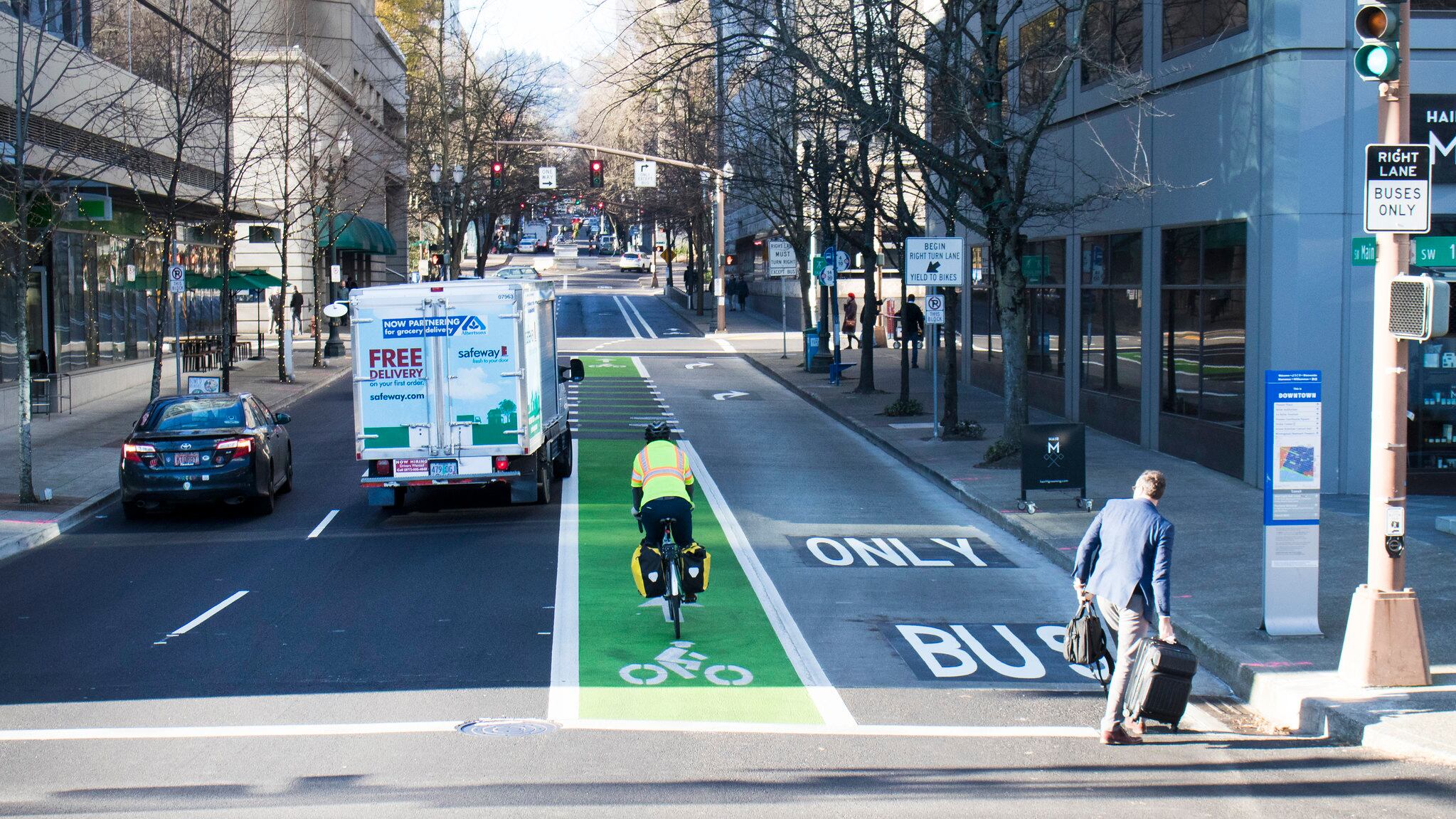A new study by the American Automobile Foundation of deaths from drivers running red lights shows a trend speeding in the wrong direction.
Nationally, deaths from drivers running red lights reached a 10-year high in 2017 and are up 28 percent from a decade ago.
The study found that people are aware of the risk of ignoring a red light but do it anyway. "85% of drivers view red light running as very dangerous, yet nearly one in three say they blew through a red light within the past 30 days when they could have stopped safely," the study found.
Oregon's rate of death (1.7 per million) is substantially higher than two neighboring states, Idaho (.7 per million) and Washington (1.2 per million). All three are below the national average of 2.4 per million.
One place where Oregon is an outlier is the percentage of red light deaths that kill pedestrians or cyclists: Over the past decade, 12.9 percent of those killed in Oregon by red-light runners were pedestrians or cyclists. That's the third highest in the nation and more than double the national rate of 5.4 percent.
The Insurance Institute for Highway Safety says part of the solution is installing more red light cameras.
"Cameras increase the odds that violators will get caught, and well-publicized camera programs discourage would-be violators from taking those odds," said Jessica Cicchino, IIHS Vice President for Research in a statement. "Camera enforcement is a proven way to reduce red light running and save lives."
In Portland, as part of the city's Vision Zero campaign aimed a eliminating traffic deaths by 2025, Transportation Commissioner Chloe Eudaly earlier this year convinced her city council colleagues to allocate $15 million over the next five years for fixed speed cameras and red light cameras.
Speed Cameras Save Lives. So Why Does Portland Have Only Eight of Them?
Safety experts encourage the adoption of technological fixes to bad driving. In Oregon, lawmakers in 2017 approved an expansion of the red light cameras to allow them to also issue speeding tickets. But many states are moving in the opposite direction—earlier this summer, Texas became at least the eighth state to ban red light cameras.

